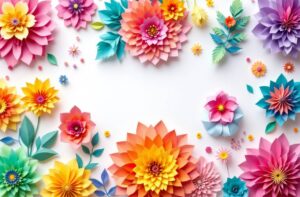Posters play a crucial role in event promotion, serving as eye-catching advertisements that not only inform but also entice potential attendees. A well-designed poster can capture attention and convey essential details about an event in a matter of seconds, making it an invaluable tool for marketers and organizers alike.
The blend of aesthetics and functionality in poster design is essential; striking visuals draw people in, while clear and concise messaging ensures that the intended information is effectively communicated.
By harmonizing beauty with purpose, posters can transform mere invitations into compelling calls to action, ultimately driving higher attendance and engagement at events.
Understanding Your Audience
Identifying the target demographic for your event is the first step in creating an effective poster. Understanding who your audience is—not just in terms of age or gender, but also their interests, values, and preferences—helps you craft visuals and messages that truly resonate. For example, if your event caters to young professionals, incorporating modern design elements and trendy colors will likely capture their attention more effectively than traditional styles.
To tailor your poster content, consider using language that reflects the audience’s tone of voice; for instance, a more casual, friendly approach may appeal to a younger crowd. Additionally, think about incorporating imagery that aligns with their interests—such as vibrant graphics, relatable characters, or cultural references.
By deeply understanding your audience, you not only enhance the relevance of your poster but also increase the chances that viewers will engage with your event.
Defining Your Event Theme
Defining your event theme is crucial as it serves as the backbone for your entire promotional strategy, including your poster design. A well-articulated theme encapsulates the essence of your event, providing a clear direction for all creative elements. When your poster ideas align with this theme, it creates a cohesive experience that captures the event’s spirit and attracts the right audience.
For instance, if your event is a retro-themed music festival, you might choose bold, vibrant colors and vintage typography reminiscent of the 70s or 80s. Alternatively, a health and wellness retreat may benefit from softer hues, natural imagery, and clean, calming fonts that evoke a sense of tranquility and rejuvenation.
In another example, a technology conference might go for sleek, modern layouts with cool color palettes and futuristic imagery to reinforce its innovative focus.
By carefully selecting themes and corresponding poster styles, you enhance the overall impact of your promotional efforts, ensuring that potential attendees can instantly connect with what your event has to offer.
Elements of Effective Poster Design
When it comes to crafting impactful posters, several key design elements play a pivotal role in ensuring that your message is both visually appealing and easily digestible. First and foremost, color is a powerful tool that can evoke emotions and set the tone for your event.
Bold, vibrant colors may energize and attract attention, while softer hues can create a more serene and inviting atmosphere. It’s essential to choose a color palette that not only aligns with your event theme but also resonates with your target audience.
Next, typography is vital for conveying your message clearly. Selecting the right fonts involves considering legibility, hierarchy, and style—different font weights and sizes can help emphasize critical information such as the event name, date, and location. Aim for a clean and readable typeface that complements your poster’s overall aesthetic without overwhelming the viewer.
The choice of images is another critical component; striking visuals can draw potential attendees in and provide context for your event. High-quality images that reflect the theme and purpose of the event help create an emotional connection, while infographics may effectively convey complex information at a glance.
Lastly, the layout of your poster must establish a logical and appealing flow of information. A well-organized design leads the viewer’s eye from one element to the next, ensuring that the most important details stand out. Keep in mind the importance of white space, as it can enhance readability and prevent your poster from appearing cluttered.
Striking the right balance between artistic expression and readability is key; while creative designs captivate attention, clarity in messaging is essential for fostering understanding and engagement.
Incorporating Branding
When designing a poster, integrating your brand elements is essential to strengthen brand identity and create a lasting impression. Start by prominently featuring your logo; it acts as the visual cornerstone of your branding and should be placed strategically so that it’s easily noticed without overshadowing the event information. The size and placement should reflect its importance—not only does it link the poster to your brand, but it also lends credibility to the event itself.
Next, consider your color palette. Consistency in colors across your marketing materials enhances brand recognition; selecting shades that align with your overall brand identity will create a cohesive look and feel.
Use these colors not just for the background or fonts, but also in graphic elements, helping to unify the design and keep your brand at the forefront of viewers’ minds.
Lastly, typography should echo your brand’s voice and personality. Choose fonts that align with your brand’s ethos—whether that’s modern, playful, or classic. By maintaining a uniform typeface across posters and other promotional materials, you enhance the visual identity of your brand, making it instantly recognizable.
When these brand elements work harmoniously together in your poster design, they not only capture attention but also reinforce the overall message and purpose of your event, leading to higher engagement and attendance.
Choosing the Right Message
Crafting clear and compelling messaging is essential for effectively conveying the core details of your event. Start by identifying the key information that your audience absolutely needs to know, such as the event name, date, time, location, and any noteworthy speakers or performers.
Simplify this information into concise statements that highlight what makes your event unique and appealing. Use active language and a positive tone to capture interest; for instance, instead of saying “Join us for a workshop,” try, “Unlock your potential at our exciting workshop!”
To make the main event details stand out, employ visual hierarchy in your design. Use larger, bolder fonts for crucial information, such as the event title, while supporting details can be presented in smaller, regular font sizes.
Additionally, consider incorporating contrasting colors or eye-catching graphics to draw attention to important elements. Bullet points or icons can help break down information and make it more digestible, ensuring attendees can quickly grasp what your event is all about.
Lastly, don’t forget a strong call to action! Encourage your audience to take the next step—whether it’s registering online or saving the date—by making your message inviting and enticing.
Practical Considerations for Poster Materials and Sizes
When selecting materials for your posters, it’s important to consider both durability and visual impact. If your event will take place outdoors, opt for weather-resistant materials such as vinyl or heavy-duty paper to ensure your posters withstand the elements. For indoor events, high-quality cardstock or glossy paper can provide a polished look.
Remember, the choice of material can affect how the colors and details appear, so always request a sample or proof before finalizing your decision.
In terms of size, consider the venue and your target audience. Larger posters, such as those sized 24×36 inches, can attract attention from a distance, making them ideal for bustling environments like trade shows or festivals. On the other hand, smaller formats, such as 11×17 inches, are great for distributing to local businesses or community boards.
Always keep in mind the message’s readability from various distances; your text should be legible at a glance without forcing viewers to squint.
Tips for Printing and Distribution
When it comes to printing, working with a reputable printing service is key. They can guide what materials and finishes work best for your design. Also, consider ordering a few extra copies to account for any last-minute changes or accidental damages.
If your event is particularly large-scale, think about using multiple printers to handle the volume, ensuring you meet deadlines without sacrificing quality.
For distribution, strategize the placement of your posters to maximize visibility. Identify key areas with high foot traffic, such as community centers, cafes, and universities. Don’t forget to seek permission before posting in these locations! Use social media and your event website to supplement physical posters, sharing digital versions to reach an even wider audience.
Creating a buzz around your event will encourage attendees to seek out your posters and become curious about what you have to offer.
Innovative Poster Ideas
Creative poster designs can breathe new life into event promotion, making them not only informative but also visually striking. Here are a few concepts to inspire your next poster project:
1. Interactive Elements
Consider incorporating QR codes that link to exclusive content—like trailers, interviews, or behind-the-scenes glimpses—enhancing audience interaction. This also allows those who scan the code to receive reminders or additional materials about the event on their smartphones.
2. Minimalist Designs
Less can often be more. A minimalist approach can create elegance and impact, focusing on one strong visual alongside a single, captivating line of text. For instance, a poster for a yoga retreat might feature a serene image of a sunrise over a mountain with the simple phrase, “Find Your Peace.”
3. Bold Typography as Art
Utilizing typography as the main visual can create a compelling statement. For example, a music festival poster may feature the artist’s name in oversized, vibrant letters that reflect the genre—like a graffiti style for a hip-hop event or sleek fonts for a classical concert.
4. Collage Aesthetics
Mixing photographs, textures, and snippets of text can create a rich, dynamic atmosphere. Events like art showcases can benefit from this style, blending images of featured artists’ works with inspiring quotes or details about the exhibition to draw viewers in.
5. Thematic Colour Schemes
Choosing a color scheme that mirrors the theme of your event can create a cohesive look. For instance, earthy tones for an environmental symposium or bright, festive colors for a community fair can instantly convey the event’s mood and purpose.
Examples of Standout Posters
To illustrate the impact of these ideas, consider the following standout posters:
- SXSW Music Festival: A vibrant, collage style that blends artist images and event details, creating an eye-catching whirl of creativity that reflects the festival’s dynamic atmosphere.
- TED Talks: Featuring bold typography with a minimalist background, these posters present the speaker’s name as the focal point, supported by an engaging tagline that sparks curiosity.
- Burning Man: Known for its artistic expression, posters from this festival often feature intricate designs and colorful artwork that embody the spirit of community and creativity that the event promotes.
These examples demonstrate how unique concepts and designs can make posters not only informative but also memorable, enhancing engagement and excitement surrounding your event.
Conclusion
In summary, thoughtful poster design is crucial for capturing the attention of your audience and effectively conveying your event’s message.
By choosing the right materials, sizes, and creative elements, you can make your posters not just informative, but also visually captivating. Don’t be afraid to experiment with innovative ideas—whether it’s integrating interactive elements, embracing minimalist designs, or playing with bold typography.
Each event is an opportunity to make a bold statement, and your posters can serve as the vibrant face of your promotional efforts. So go ahead, unleash your creativity, and create eye-catching posters that leave a lasting impression on your audience!




















